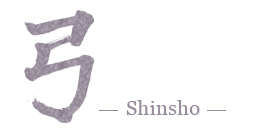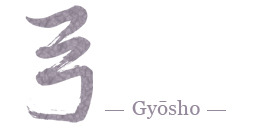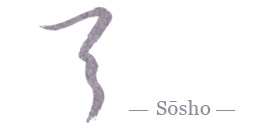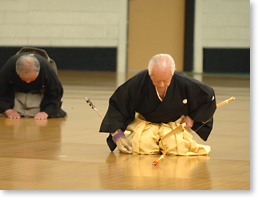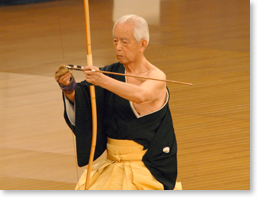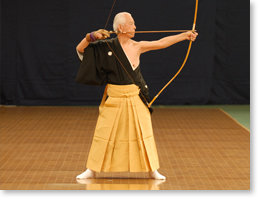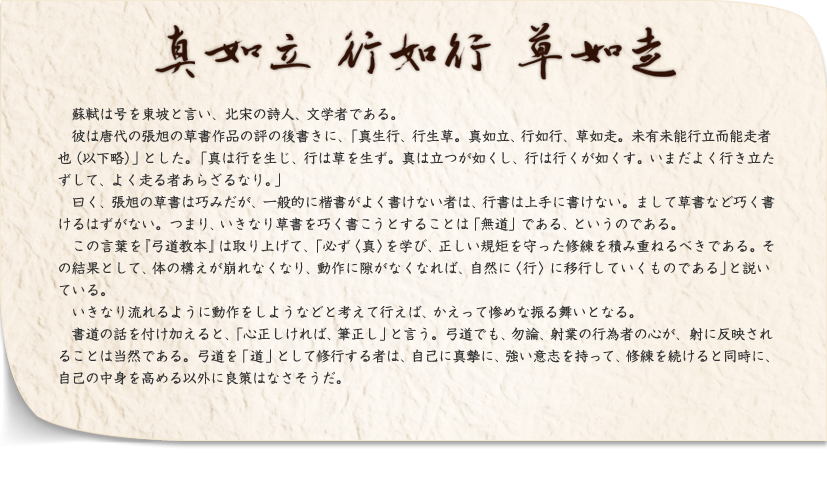Home > 一語一得 / One Story, One Lesson

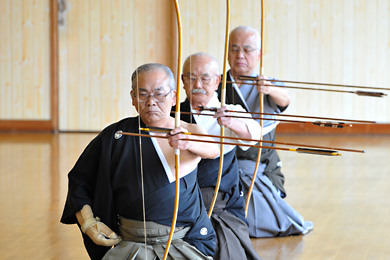
Su Shi (蘇軾)※, also known as Dong Po (東坡) ※, was a famous Chinese poet and writer from the Northern Song Period (960-1127). He once wrote about the works of Zhang Xu (張旭)※, a calligrapher from the Tang Dynasty (618-907), well-known for his Sōsho (草書 - Cursive Script) style calligraphy. In an excerpt from his writings, he wrote:
真生行、行生草。真如立、行如行、草如走。未有未能行立而能走者也。
"Shin brings forth Gyō. Gyō brings forth Sō. Shin is to stand; Gyō is to walk;
Sō is to run. One who cannot stand and walk has no ability to run."
It was said that Zhang Xu was highly skilled in Sōsho style calligraphy. But for those who were not able to write in Shinsho (真書 - Regular Script) ※ style calligraphy, would not have been able to write in Gyōsho (行書 - Semi-Cursive Script) style either. To be able to write in Sōsho style calligraphy was even more unlikely. Therefore trying to write Sōsho style from the start was considered a Mudo (無道 - lack of a path) .
In the Kyudo Manual, it states "one should acquire Shin through diligent practice that respects the correct standards. Then, when the posture has attained stability and is without flaw, naturally Shin will become the movement of Gyō." By trying to make the movements flow by force will only cause them to be sloppy and ungraceful.
There is a saying in Calligraphy, "If your heart keeps to the truth; your brush movements will carry out the truth". Kyudo is no exception. The mental attitude of the archer is reflected in their shooting. By using Kyudo as the "path" in which we train in, only by staying true to ourselves and training with strong determination are we able to allow ourselves to progress.
※Su Shi (蘇軾) = Sōshoku, Dong Po (東坡) = Sotoba, Zhang Xu (張旭) = Chōkyoku in Japanese.
Shinsho (真書) is also known as Kaisho (楷書).

